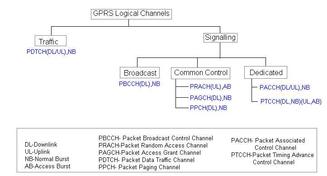GPRS RxQUAL vs. BER: Understanding Signal Quality
Advertisement
This page explains the difference between RxQUAL (Receiver Quality) and BER (Bit Error Rate) in the context of GPRS (General Packet Radio Service). In GPRS, RxQUAL represents the quality of the received signal, while BER represents the rate at which errors occur in the received bits.
RxQUAL values range from 0 to 7, and each value corresponds to a specific range of BER values. These values are calculated based on blocks of data (four bursts) and then averaged. The RxQUAL value represents this averaged BER.
Important Note: This RxQUAL value is primarily applicable to speech communication, not packet-based data transfer.
RxQUAL vs. BER Table
| RxQUAL | BER |
|---|---|
| RXQUAL_0 | Less than 0.1 % |
| RXQUAL_1 | 0.26% to 0.30% |
| RXQUAL_2 | 0.51% to 0.64% |
| RXQUAL_3 | 1.0% to 1.3% |
| RXQUAL_4 | 1.9% to 2.7% |
| RXQUAL_5 | 3.8% to 5.4% |
| RXQUAL_6 | 7.6% to 11.0% |
| RXQUAL_7 | Greater than 15.0% |
Quality (RXQUAL) Measurements
As part of radio environment monitoring, the mobile station performs several measurements, including:
- Received signal level (RXLEV) measurements
- Quality (RXQUAL) measurements
- Interference measurements
During packet-transfer mode, the mobile device estimates the quality of the received downlink blocks.
The RXQUAL is computed from the average BER before channel decoding takes place. The network can use the RXQUAL for several purposes, including:
- Network-controlled cell reselection (handover).
- Dynamic coding scheme adaptation (adjusting the data encoding based on signal quality).
- Downlink power control (adjusting the power transmitted to the mobile device).
In packet idle mode (when no data is being transferred), no quality measurements are performed.
Advertisement
 RF
RF

